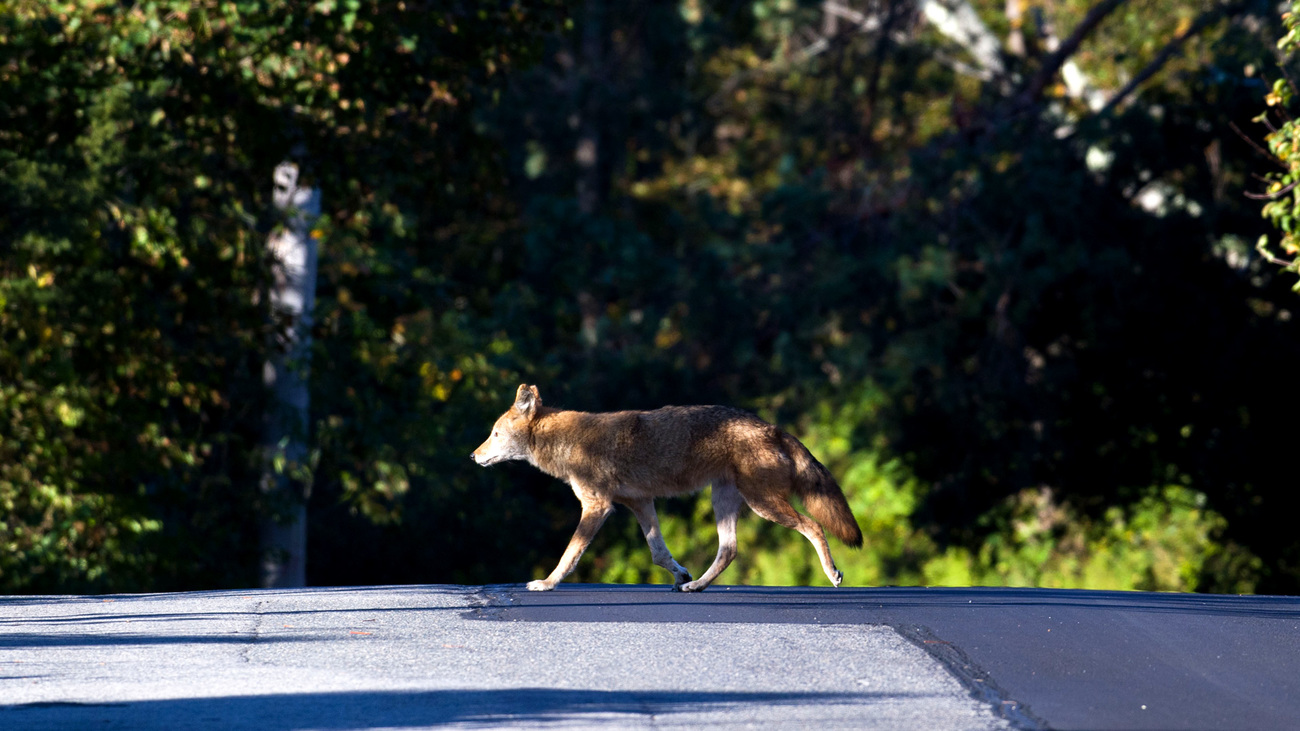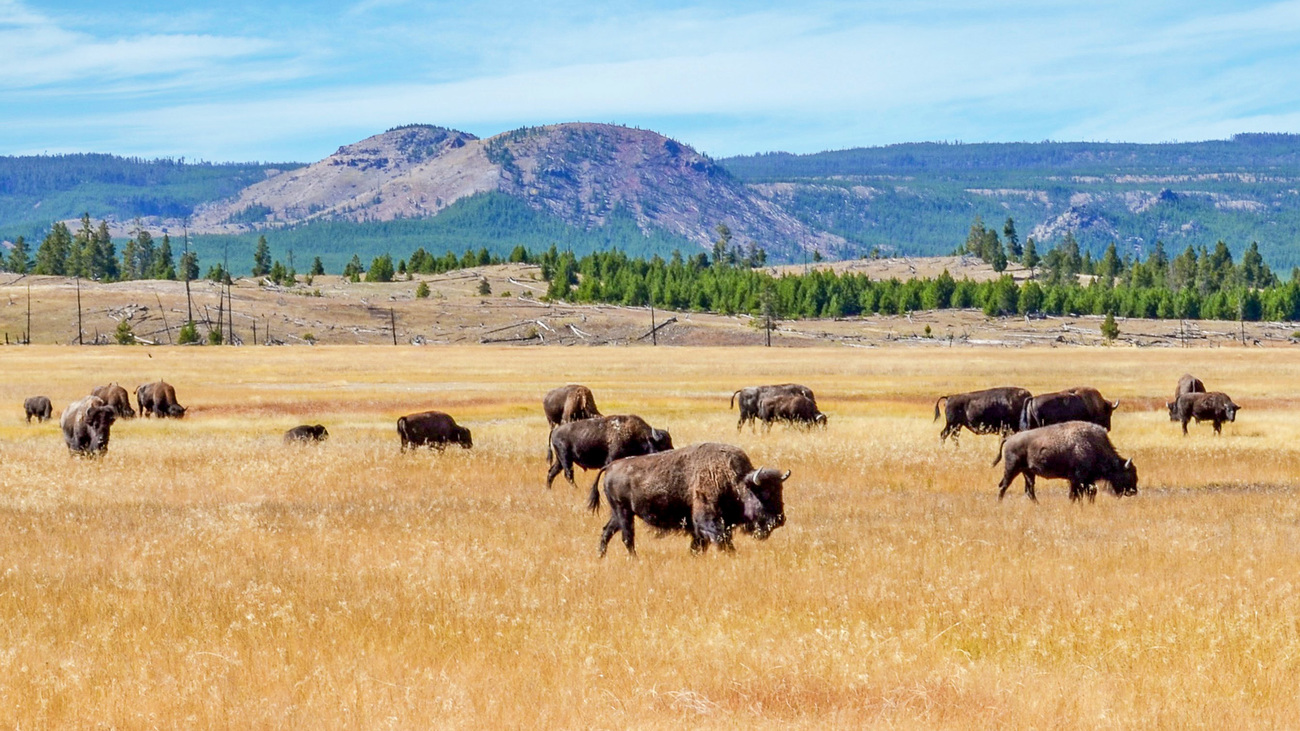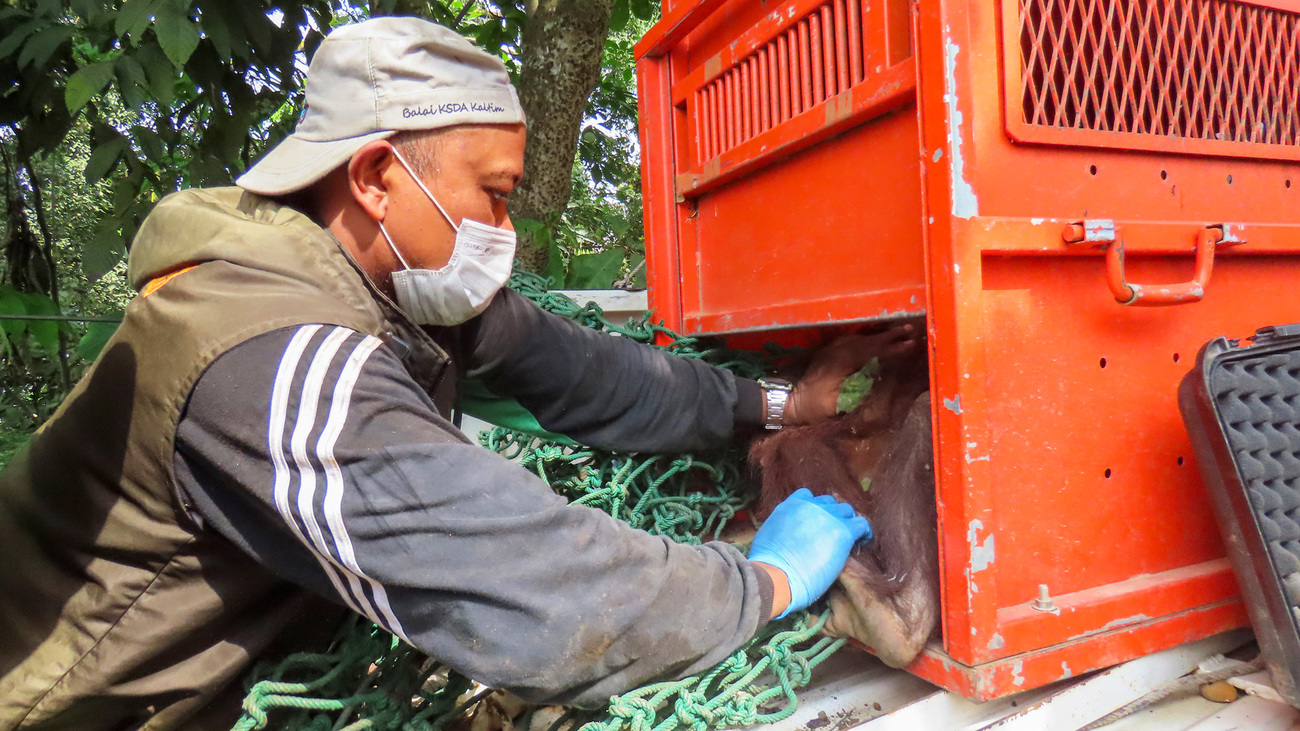How habitat fragmentation affects animals
How habitat fragmentation affects animals
When parts of a species’ habitat are damaged by human activity, destroyed by natural disasters, or occupied by agriculture, infrastructure, and urban areas, pieces of what once was one large natural area become isolated patches. This is the process of habitat fragmentation—one of the biggest threats to wildlife in every corner of the world where humans live.

Habitat fragmentation not only leaves animals with less space and freedom of movement—it also causes a number of short-term and long-term impacts on the health of individual species and their ecosystems.
Human activity is the major driver of habitat fragmentation, but some natural processes also play a role. Luckily, there are ways we can work to stop habitat fragmentation and help impacted species thrive.
What is habitat fragmentation?
Different from habitat loss and habitat degradation, habitat fragmentation occurs when a species’ habitat gets broken into pieces that are no longer connected to each other. An easy example to imagine is a forest inhabited by a population of brown bears, through which humans suddenly construct a highway. Now the forest is divided into two separate pieces.
Though the bears may technically be able to walk across the highway and access the other half of their habitat, they face significant danger in doing so, as they may be struck by a car. In this way, the habitat becomes fragmented, and the brown bear population may become divided as well—or face decline due to the new threat of cars.
What causes habitat fragmentation?
Many common causes of habitat fragmentation are linked to human activity. Building roads, railways, pipelines, farms, housing, cities, and other infrastructure can divide wild areas into pieces. Not only do human settlements physically block animals from reaching parts of their habitat, but they also can use up resources, effectively decreasing the suitable habitat available to these animals.

Other human activities that can fragment wildlife habitats include oil and gas exploration, commercial development, and diverting water through technology like dams. For example, freshwater fish face severe limitations when dams are built in rivers. They can completely block their migration routes and cut them off from areas where they once were plentiful.
The causes of habitat fragmentation aren’t just limited to human activity, however. Natural processes like changes in the course of a river, earthquakes, volcanic eruptions, floods, and wildfires can also cut habitats into pieces.
Climate change is also a driver of habitat fragmentation, as it increases the frequency, severity, and unpredictability of disasters like fires, severe storms, and drought. As climate change worsens, so will habitat fragmentation.
What does it cause?
Some effects of habitat fragmentation on animals are immediate, such as injury and death due to car collisions, water diverting technologies, and other equipment. Others take a bit longer to manifest, such as starvation due to an inability to access food sources or dehydration due to the animals becoming cut off from their water sources.
Fragmentation can also prevent animals from accessing their breeding or nesting areas, which can lead to drastic drops in their populations.
Inbreeding can also become an issue, as animals living in fragments become restricted to smaller sub-populations. This can affect the long-term health of the population, as it lowers genetic diversity, making the animals more vulnerable to disease and less able to adapt to changes in the future. Ultimately, inbreeding makes a species more vulnerable to extinction.
Migratory species face issues from habitat fragmentation in their long journeys. They may have difficulty finding places to rest and feed, which are crucial along their long migration routes.

Habitat fragmentation can also affect species whose habitats may not be directly impacted, as it disrupts natural food chains. For example, if the brown bear population declines due to a road constructed through their forest habitat, salmon swimming in a nearby river won’t necessarily experience fragmentation—but they may experience overpopulation due to a reduction in predators.
Additionally, habitat fragmentation can lead to human-wildlife conflict. When animals are pushed into smaller and smaller pockets of habitat, they may be forced to roam into human settlements in search of food and water. This can lead to crop raiding and livestock predation, and it can threaten human safety.
The edge effect
One result of habitat fragmentation is a phenomenon known as the ‘edge effect’. The edges of a habitat can differ drastically from the more interior parts. For example, many forest-dwelling animals are safer and can access more resources deeper in the forest than on its outer reaches. The plant life also differs between the interior and edges of a habitat—for instance, the edges of forests often contain more plants that require more sunlight and are more tolerant of dry conditions. This alters the availability of food sources for animals in these habitats.
When a habitat becomes fragmented, there are more edge areas. If the pockets of habitat continue to grow smaller, there will be hardly any interior space left, causing edge effects that can negatively impact the animals living in the fragment.
How to help prevent fragmentation and reconnect habitats
There are a few ways you can help wild animals with fragmented habitats in your own garden or backyard.
- Use trees and hedgerows on the border of your yard. These natural property boundaries can help native wildlife move between fragmented woodland habitats.
- Plant more native trees, wildflowers, and grasses. Local and migratory animals will enjoy these resources.
- Put out water sources for animals. Something as simple as a bowl or a bird bath can help species that are struggling to find natural water sources in their fragmented habitats.
You can also support conservation initiatives to rewild and establish protected areas. Rewilding is the practice of letting nature take over in an area that has been damaged or deteriorated by human presence.

What animals are experiencing habitat fragmentation?
Countless species around the world are contending with habitat fragmentation, and many are being pushed to the brink of extinction. These are just a few examples of animals impacted by habitat fragmentation today.
On perhaps the largest scale, elephants serve as a prime example of the effects of habitat fragmentation. African savannah elephants typically have ranges of over 30,000 square kilometers—about the size of Belgium or Massachusetts. However, due to human expansion, their territories have shrunk and become divided from one another. With slow reproduction, their inability to find adequate resources and seek out mates is only exacerbating their population decline.
IFAW is working to solve this issue and reconnect fragmented elephant habitats through our Room to Roam initiative. Part of our approach is to work with local landowners and community members to create safe passages for elephants and other species to move freely across their range.
Asian elephants are also victims of habitat fragmentation, as humans continue to expand into the natural world. African wild dogs are impacted particularly by farms and grazing areas, which continue to take up space in their habitats.
Also in Africa, black rhinos face habitat fragmentation from agriculture, plantations, mining, and tourism. Black rhinos are territorial, and when they are forced to live in close proximity to one another, they experience clashes and fights, lower breeding rates, and higher rates of disease.
In North America, urbanization, agriculture, and industrial development have fragmented the habitat of bison. Through much of their range and their migratory paths, grasslands that formerly served as grazing areas have been converted to farmland.
The tundra and forest habitats of caribou are becoming fragmented by things like transportation infrastructure, energy plants, tourist resorts, and forestry. When groups of caribou become separated from each other, it becomes more difficult for them to breed and to migrate in large herds. This affects not only the caribou themselves but also, as a result of altered feeding patterns, the vegetation in their ecosystems.
Help us combat habitat fragmentation and support innovative solutions to reconnect wild areas.
Related content
Our work can’t get done without you. Please give what you can to help animals thrive.